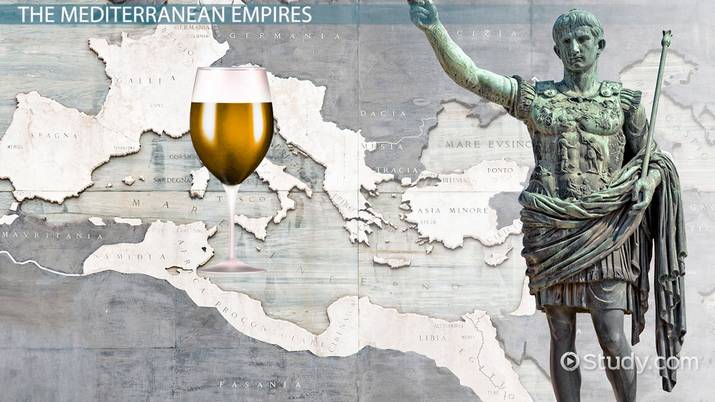Hagia Sophia: Enduring Icon Of Byzantine And Ottoman Empires

Table of Contents
The Hagia Sophia's Byzantine Era (532-1453 AD): A Cathedral of Imperial Grandeur
Construction and Architectural Innovation
Emperor Justinian I, in his ambition to create the most glorious cathedral in the Christian world, commissioned the construction of the Hagia Sophia in 532 AD. The project was a feat of Byzantine engineering, utilizing innovative techniques to overcome significant architectural challenges. The architects, Anthemius of Tralles and Isidore of Miletus, masterfully employed pendentives – curved triangular structures – to support the massive dome, a groundbreaking solution that allowed for a vast, unsupported interior space.
- Scale and Grandeur: The Hagia Sophia's sheer size and magnificence were unprecedented. Its immense dome, soaring to a height of 180 feet, dominated the Istanbul skyline, a symbol of Byzantine power and ingenuity.
- Engineering Marvel: The construction involved complex calculations and the use of advanced building materials, showcasing the high level of engineering skill during the Byzantine era. The use of brick and marble, along with sophisticated techniques, ensured the structure's durability and longevity.
- Keywords: Justinian, pendentives, Byzantine architecture, engineering, construction, Hagia Sophia construction
Religious and Political Significance
The Hagia Sophia served as the central cathedral of the Byzantine Empire for nearly 1000 years, holding immense religious and political significance. It was the site of crucial imperial ceremonies, and its grandeur reinforced the emperor's power and divine authority.
- Religious Ceremonies: Imperial coronations, religious festivals, and important liturgical events were held within its walls, solidifying its position as the heart of the Byzantine religious and political world.
- Lavish Interior Decorations: The interior was lavishly decorated with gold, mosaics, and marble, reflecting the empire's wealth and artistic prowess. These decorations served not only aesthetic purposes but also communicated religious and imperial messages.
- Keywords: Byzantine Empire, religious significance, imperial power, mosaics, icons, Hagia Sophia religious significance
The Hagia Sophia’s Artistic and Cultural Legacy (Byzantine)
The surviving mosaics within the Hagia Sophia represent a pinnacle of Byzantine art. These exquisite works, many depicting the Virgin and Child, showcase the refined artistic style and theological understanding of the time.
- Artistic Value: The mosaics' vibrant colors, intricate details, and symbolic imagery demonstrate the sophisticated artistic techniques employed by Byzantine artisans. Their impact can be seen in numerous other churches and artistic endeavors throughout the Empire.
- Cultural Influence: The Hagia Sophia's architectural and artistic innovations profoundly influenced subsequent architectural and artistic movements, both within the Byzantine world and beyond. Its design and decorative elements served as models for countless other structures.
- Keywords: Byzantine art, mosaics, art history, cultural influence, Hagia Sophia mosaics
The Hagia Sophia's Ottoman Era (1453-1935 AD): Transformation into a Mosque
The Conquest of Constantinople and the Conversion into a Mosque
The Ottoman conquest of Constantinople in 1453 marked a turning point in the Hagia Sophia's history. Sultan Mehmed II, upon conquering the city, quickly converted the cathedral into a mosque, reflecting the shift in religious and political dominance.
- Conversion Process: The conversion involved removing or covering Christian religious symbols and adding Islamic architectural elements.
- Ottoman Rule: The Hagia Sophia became a major mosque in the Ottoman Empire, playing a vital role in the city's religious life.
- Keywords: Ottoman Empire, Mehmed II, Constantinople, conquest, mosque conversion, Hagia Sophia mosque
Additions and Modifications under Ottoman Rule
Under Ottoman rule, several additions and modifications were made to adapt the structure for Islamic worship. The most visible changes were the addition of minarets – slender towers from which the call to prayer is announced.
- Architectural Features: Mihrabs (prayer niches indicating the direction of Mecca), minbars (pulpits), and other Islamic architectural elements were added, while preserving the magnificent Byzantine structure.
- Maintenance and Restoration: The Ottomans undertook significant maintenance and restoration work throughout their rule, ensuring the building's continued structural integrity.
- Keywords: minarets, mihrabs, Ottoman architecture, Islamic architecture, restoration, Hagia Sophia Ottoman era
The Hagia Sophia’s Artistic and Cultural Legacy (Ottoman)
The Hagia Sophia's conversion to a mosque significantly impacted Ottoman art and culture. Its transformation symbolized Ottoman power and imperial prestige while also reflecting a cultural exchange between the Byzantine and Ottoman worlds.
- Symbol of Power: The Hagia Sophia became a prominent symbol of Ottoman might and imperial authority, representing their dominance over Constantinople and the former Byzantine Empire.
- Integration of Styles: While significant changes were made to adapt it for Islamic worship, many Byzantine artistic elements remained and became integrated into the mosque's overall aesthetic.
- Keywords: Ottoman art, cultural exchange, Islamic art, imperial symbol, Hagia Sophia Ottoman influence
The Hagia Sophia as a Museum and World Heritage Site (1935 – Present)
Secularization and Museum Status
In 1935, under the leadership of Mustafa Kemal Atatürk, the Hagia Sophia was secularized and transformed into a museum. This decision reflected Turkey's move toward a secular state.
- Conservation Efforts: Extensive conservation efforts were undertaken to preserve the mosaics, architectural features, and historical artifacts within the building.
- Tourist Attraction: The Hagia Sophia quickly became one of Istanbul's most popular tourist attractions, drawing millions of visitors annually.
- UNESCO World Heritage Site: Its historical and architectural significance led to its designation as a UNESCO World Heritage Site.
- Keywords: Atatürk, secularization, museum, conservation, tourist attraction, UNESCO World Heritage Site, Hagia Sophia museum
Ongoing Debates and Significance
The Hagia Sophia's status has been a subject of ongoing debate and controversy. Its history reflects complex interactions between religious and political forces, showcasing both cultural exchange and conflict.
- Religious Tolerance: The building's history as a church, a mosque, and now a museum highlights the complexities of religious tolerance and cultural heritage.
- Historical Significance: The Hagia Sophia continues to serve as a significant historical and architectural landmark, representing the rich and layered history of Istanbul.
- Keywords: controversy, religious tolerance, cultural heritage, historical significance, Hagia Sophia present
Conclusion
The Hagia Sophia, a majestic structure bridging Byzantine and Ottoman legacies, continues to inspire awe and wonder. From its innovative Byzantine architecture to its transformation into a magnificent mosque and subsequent secularization, its history mirrors the dynamic power shifts and cultural exchanges of two powerful empires. Today, as a museum and UNESCO World Heritage Site, the Hagia Sophia stands as a powerful symbol of human creativity and a testament to the enduring power of history. Plan your visit to witness firsthand the remarkable legacy of the Hagia Sophia and discover the intricate details of this enduring icon. Understanding its rich history allows us to better appreciate the Hagia Sophia's continued importance and its profound influence on global architecture and culture.

Featured Posts
-
 Top India Fund Manager Dsp Sounds Warning Boosts Cash Holdings
Apr 29, 2025
Top India Fund Manager Dsp Sounds Warning Boosts Cash Holdings
Apr 29, 2025 -
 Dismissing Stock Market Valuation Concerns Bof As Rationale
Apr 29, 2025
Dismissing Stock Market Valuation Concerns Bof As Rationale
Apr 29, 2025 -
 Hollywood Production Halts The Ongoing Actors And Writers Strike
Apr 29, 2025
Hollywood Production Halts The Ongoing Actors And Writers Strike
Apr 29, 2025 -
 North Korea Confirms Troop Deployment To Russia In Ukraine First Official Admission
Apr 29, 2025
North Korea Confirms Troop Deployment To Russia In Ukraine First Official Admission
Apr 29, 2025 -
 Hungarys Stand Against Us Pressure Preserving Economic Links With China
Apr 29, 2025
Hungarys Stand Against Us Pressure Preserving Economic Links With China
Apr 29, 2025
Latest Posts
-
 You Tubes Growing Appeal To Older Viewers Nostalgia And Accessibility
Apr 29, 2025
You Tubes Growing Appeal To Older Viewers Nostalgia And Accessibility
Apr 29, 2025 -
 How You Tube Caters To The Preferences Of Older Viewers
Apr 29, 2025
How You Tube Caters To The Preferences Of Older Viewers
Apr 29, 2025 -
 You Tube A Platform For Classic Tv Shows And Older Viewers
Apr 29, 2025
You Tube A Platform For Classic Tv Shows And Older Viewers
Apr 29, 2025 -
 You Tube A New Home For Classic Tv Shows And Older Viewers
Apr 29, 2025
You Tube A New Home For Classic Tv Shows And Older Viewers
Apr 29, 2025 -
 You Tubes Growing Appeal To Older Viewers A Trend Analysis
Apr 29, 2025
You Tubes Growing Appeal To Older Viewers A Trend Analysis
Apr 29, 2025
